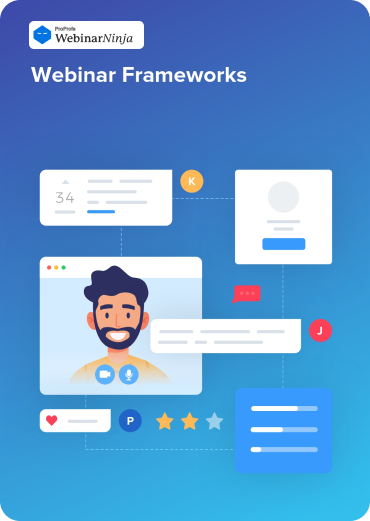
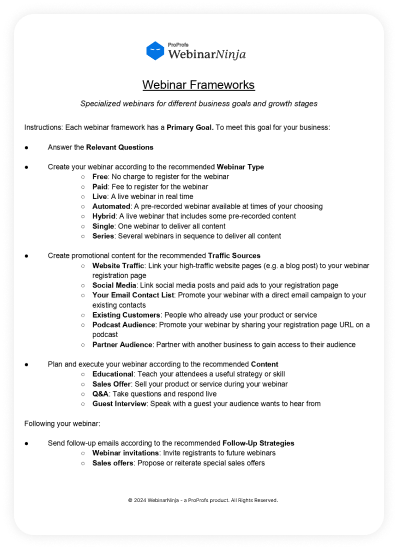
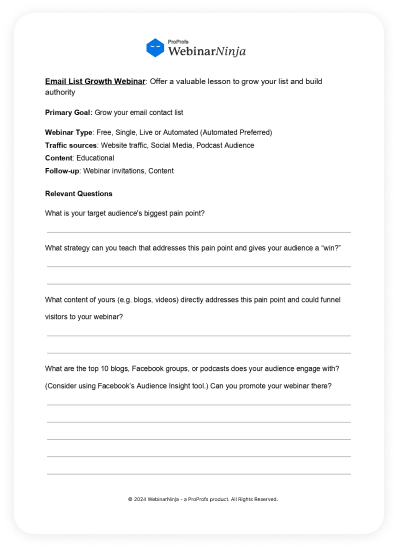
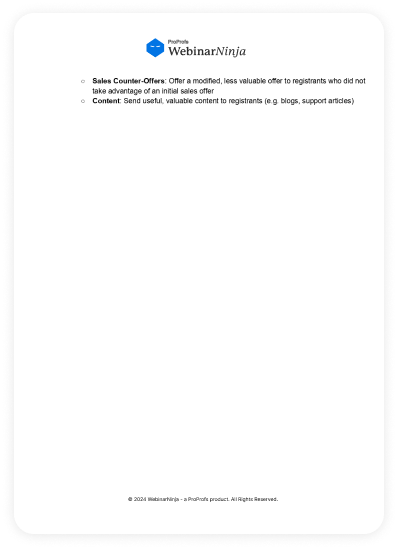
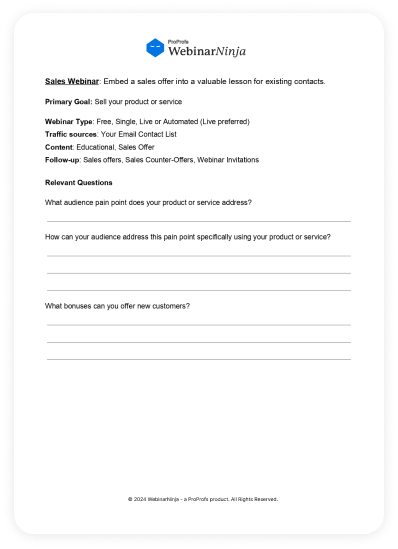
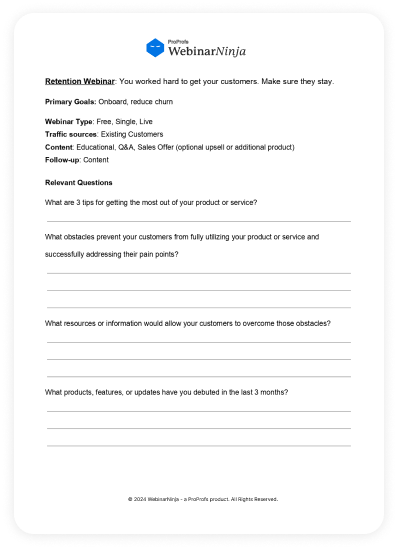
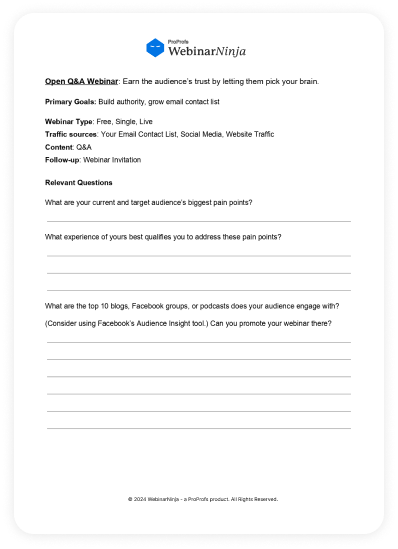
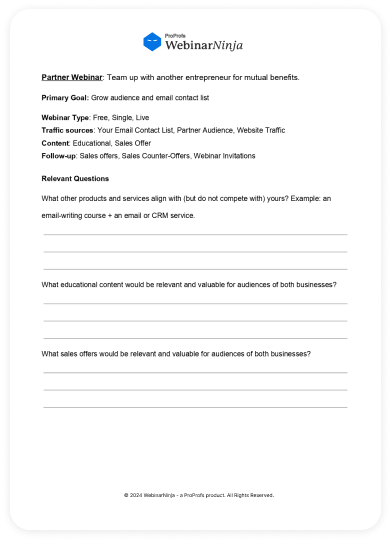
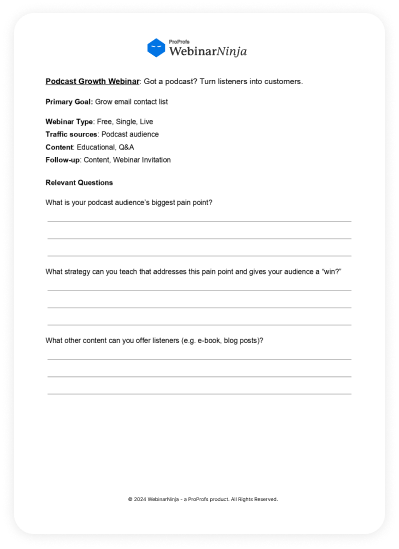
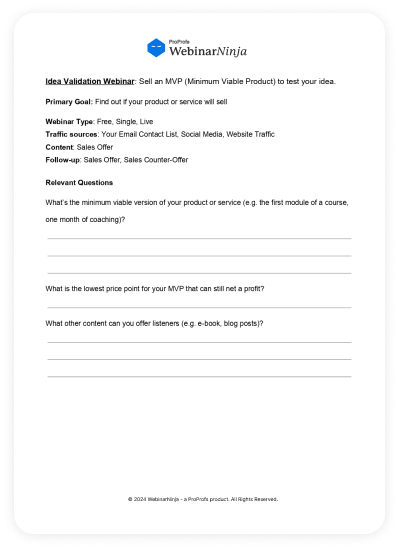
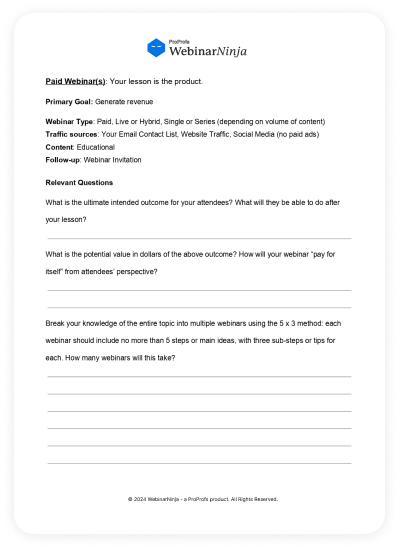
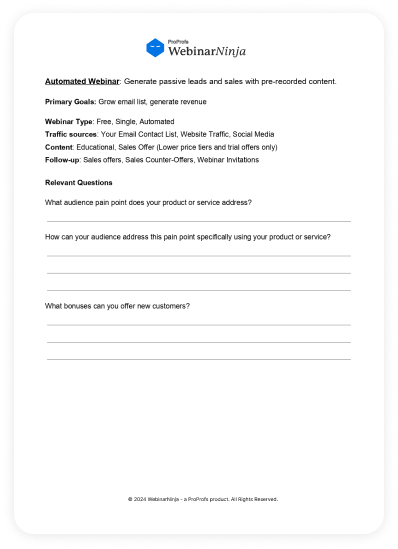
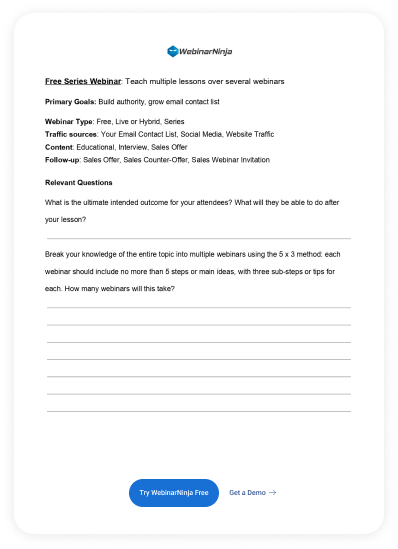
A webinar framework consists of several components to ensure a smooth and engaging experience for both the presenter and the attendees. Here's how to meet your specific webinar framework goal:
Begin by identifying the key objectives and requirements of your webinar. Determine who your target audience is, what value you want to provide them, and how this aligns with your overall business goals. Ask questions such as: What are your audience's primary pain points? What outcome do you want from the webinar?
Choose the most suitable type of webinar based on your objectives. Decide whether it will be a free or paid event, considering the value and exclusivity of the content. Determine if it will be a live session, which allows real-time interaction, or an automated webinar for convenience and ongoing lead generation. Evaluate if a hybrid model, combining live and pre-recorded elements, might be effective.
Develop a robust promotional strategy to attract attendees. Utilize high-traffic pages on your website by linking them to your webinar registration page. Engage your social media audience with posts and paid advertisements. You can reach out to existing customers with tailored messages about the webinar’s relevance and promote the webinar on your podcast by sharing the registration link.
Prepare content that aligns with the webinar’s goals. If the purpose is educational, structure your presentation to teach valuable strategies or skills. For sales-oriented webinars, craft a narrative that showcases your product or service, including compelling offers. Incorporate a live Q&A session to address attendee questions and boost engagement.
After the webinar, follow up with attendees to maintain engagement and drive further action. Send invitations to future webinars to keep the audience involved. Reiterate special sales offers made during the webinar, emphasizing urgency and exclusivity. Provide a counteroffer for those who didn’t accept the initial offer, giving them another opportunity to engage.
Here are some of the major types of webinars with a suitable framework to get the best outcomes:
A webinar aimed at increasing your email subscriber list.
A webinar designed to convert leads into paying customers.
An interactive webinar where the audience can ask questions live.
A webinar focused on increasing podcast subscribers and engagement.
A webinar aimed at enhancing customer loyalty and reducing churn.
A collaborative webinar designed to build and strengthen business partnerships.
A webinar to validate new business ideas through audience feedback.
A webinar for which attendees pay to access exclusive content.
A series of webinars offered for free to provide continuous education and engagement.
A pre-recorded webinar that can be accessed anytime, providing continuous value.
An effective webinar strategy offers numerous benefits to the organizer and the participants. Here are some key paybacks of having an effective webinar strategy in place:
A structured strategy guarantees that every webinar you conduct maintains a high standard of quality and consistency. This professional and polished presentation helps build and maintain your brand's reputation.
With a good plan, the planning and preparation process becomes streamlined. You get a clear roadmap of what needs to be done, from initial concept development to execution and follow-up, saving time and reducing stress.
A well-thought-out plan includes strategies for engaging your audience, such as interactive elements like polls, Q&A sessions, and live chats. This engagement keeps your audience interested and makes the webinar more impactful.
It can help you define clear objectives and desired outcomes for your webinar. This ensures focused and relevant content, increasing the likelihood of achieving your goals, whether educating your audience, generating leads, or promoting a product.
You can easily adapt and customize your webinars for different topics, audiences, and formats. This flexibility allows you to address the diverse needs and preferences of your audience effectively.
A comprehensive strategy includes a promotional strategy to ensure your target audience knows about the webinar. This might involve email campaigns, social media marketing, and other promotional activities critical for maximizing attendance and engagement.
It includes mechanisms for collecting feedback from participants. This feedback is invaluable for continuous improvements and enhancing the overall experience for future events.
A good strategy ensures you have all the necessary technical checks and backups in place. This includes testing the platform, ensuring a stable internet connection, and having a contingency plan for technical glitches.
The webinar strategy covers post-webinar activities, such as sending follow-up emails, sharing recordings, and providing additional resources. These reinforce the content delivered during the webinar and maintain engagement with your audience.
A good strategy allows you to set KPIs and metrics to measure the success of your webinar, including attendance rates, engagement levels, feedback scores, and conversion rates. Measuring these metrics helps assess the effectiveness of your webinar and identify areas for improvement.